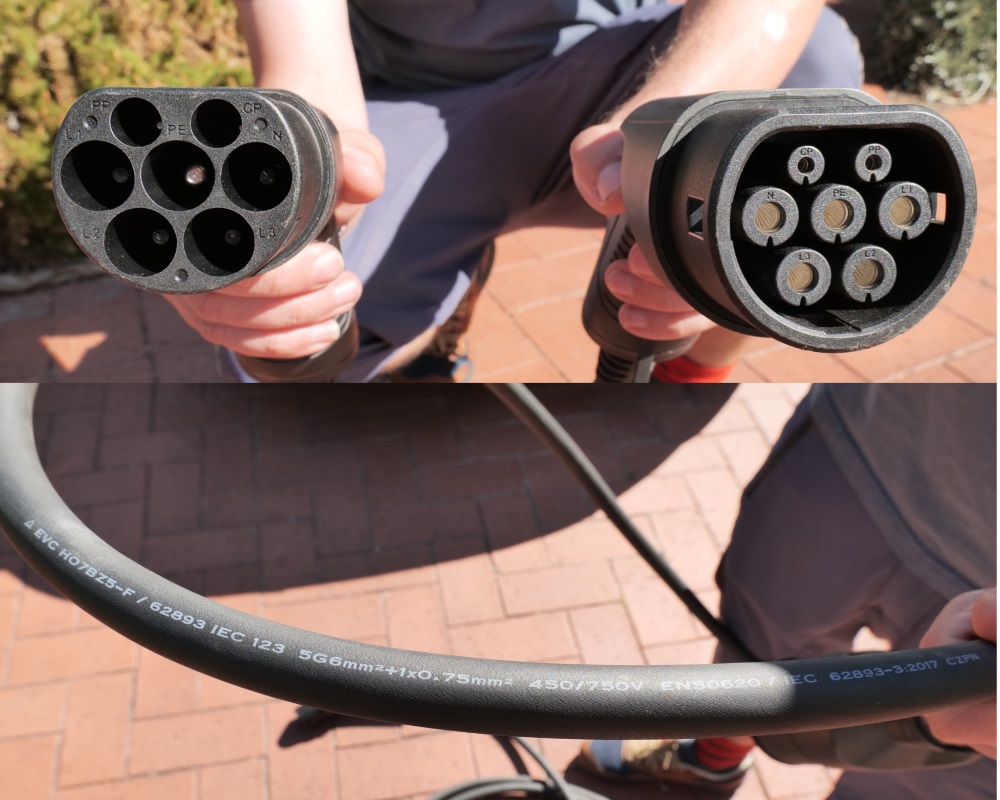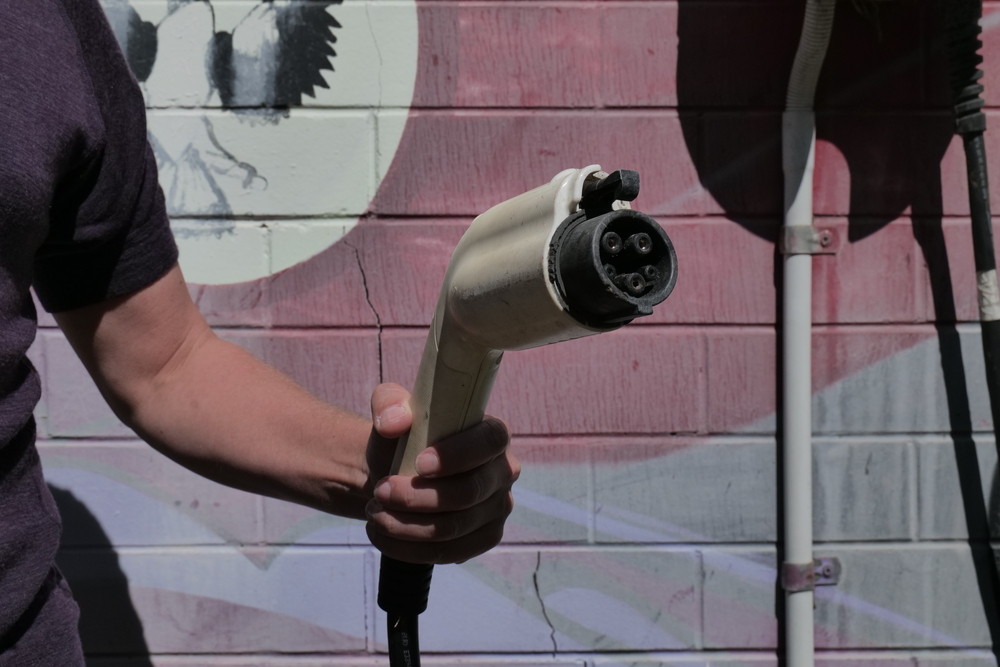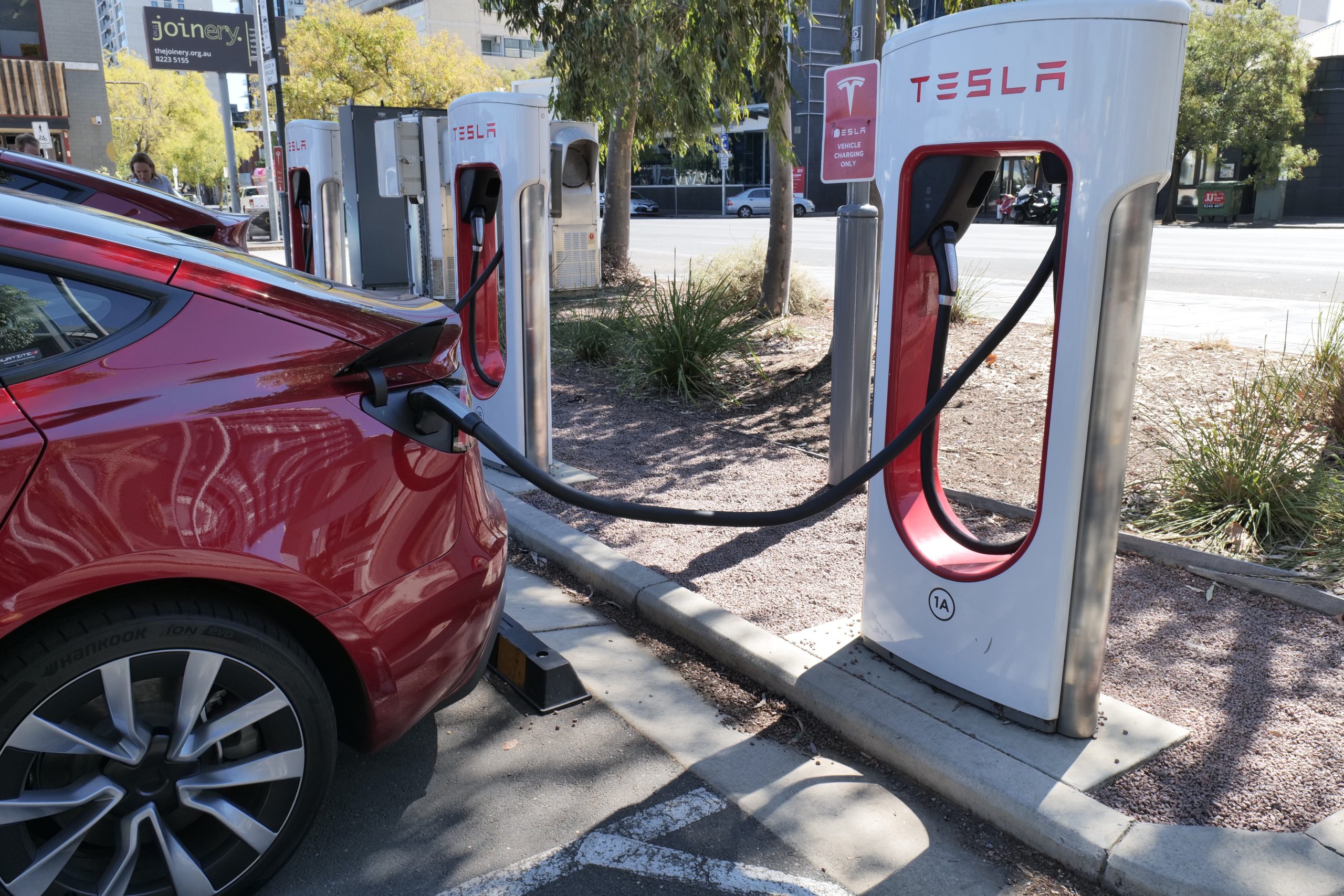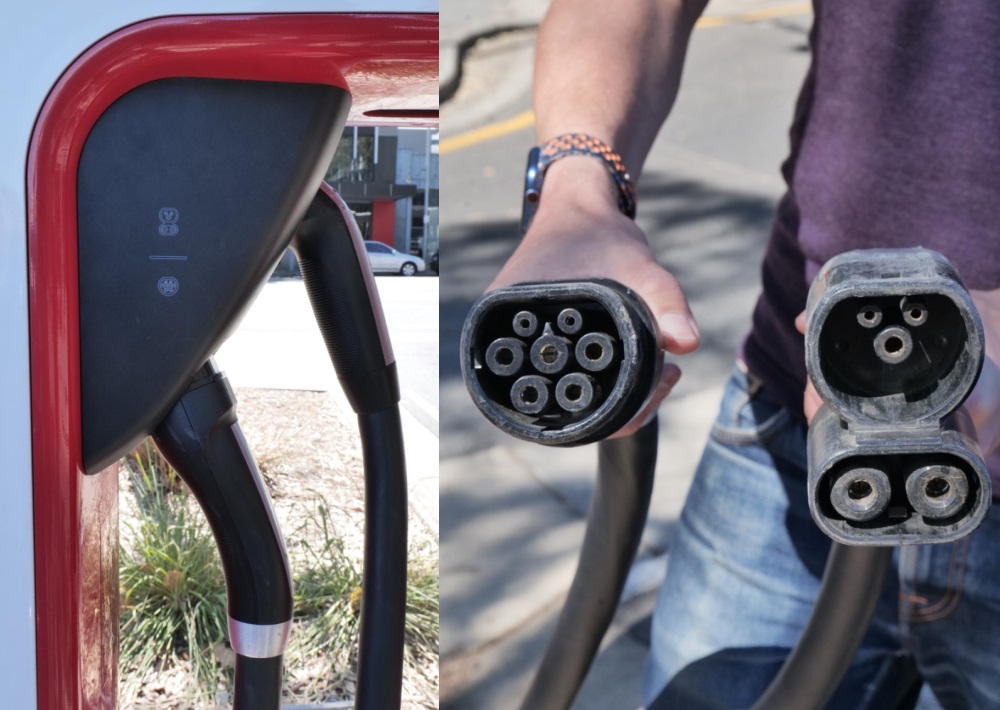Public EV Charging
Last Updated: 15th May 2024 By Finn Peacock, Chartered Electrical Engineer
When you can’t charge at home you’ll need to charge at public EV chargers. Public EV charging happens at ‘Level 2’ stations or ‘Level 3’ stations.
- Level 2 (230V AC)
- Level 3 (DC Fast Charging)
- Tesla Superchargers
- Public EV charging costs per kWh compared
- Public EV Charging Locations
Level 2 (230V AC)
Similar to home Level 2 chargers, these slower public EV chargers are commonly found in parking lots and shopping centres. Some are even free to use – although free chargers are getting harder to find. They charge at 7-22 kW.
Most of these stations require you to bring your own “Type 2 to Type 2” cable. I recommend buying one and sticking it in your boot. You can buy ‘single-phase’ and ‘three-phase’ versions of this cable. The 3-phase cables are only about $20 more, and can charge at full speed from 3-phase public chargers. So make sure you buy a 3-Phase Charging Cable (up to 22 kW).

Bottom: You know its a 3-phase cable (not single-phase) because it has “5G6mm2” which means 5 conductors = 3 phases + 1 neutral + 1 earth.
There are also a number of Level 2 stations which still have the older Type 1 plug.

The good news: these are often free to use. The bad news: you will need a “Type 1 to Type 2” adaptor to use them. These adaptors usually go for about $150.

Level 3 (DC Fast Charging)

Level 3 public chargers are high-powered and can charge EVs in as little as 30 minutes. They charge at speeds from 25-350 kW. Not only do they cost significantly more than home charging per kW, they will also cause your EV’s battery to degrade slightly faster. However, they are ideal for charging an electric vehicle on longer journeys.
Check the uptime of the public charger station you plan on using, as some networks can be shockingly unreliable.
In Australia, the most reliable and ubiquitous Level 3 network is…
Tesla Superchargers

Tesla’s network of V2 Superchargers reach DC fast charging speeds between 40-120 kW, depending on how many cars they charge at once. At its maximum of 120 kW, a V2 Supercharger could add up to 180 km of range in 15 minutes.
A significant advantage of the latest, V3 Tesla Superchargers is they each have their own dedicated power supply. This ensures maximum power delivery of up to 250 kW regardless of the number of other EVs charging at the site.
Tesla drivers in Australia can charge their car at a Supercharger just by plugging in. The charger recognises that it is your car and charges the electricity to your Tesla account. Tesla’s navigation system calculated optimised routes that include Supercharger stops. Before arriving at a stop, the Tesla’s battery will pre-condition itself to ensure efficient, fast charging. It’s a great experience.
If you own another brand of EV you can still use selected Superchargers. While the experience is not as streamlined as for Tesla owners, it is possible. Tesla aim to open up all their Supercharger stations to all EV brands eventually. In the meantime, non-Tesla owners can download the Tesla app to find compatible Superchargers.
Bear in mind that you will need to pay a $9.99 membership fee to access Superchargers at the same rate of $0.70/kWh as Tesla owners do. If not, you will have to pay $0.85/kWh, which would make it the most expensive public charging option in Australia.

Supercharger Plugs
One more thing that some folks find confusing the first time they arrive at a V2 Supercharger: you will find 2 plugs. The smaller plug is for the legacy Tesla Model S and Model X. All other EVs including Models 3 and Y should use the big plug (called CCS2).
V3 Superchargers just have the CCS2 plug.

Public EV charging costs per kWh compared
What can you expect to pay at different public charging stations? It depends on the charging speed. For speeds up to 22 kW, you will pay $0.30-0.50 per kWh. You will pay $0.60-0.69 per kWh up to 150 kW. Up to 350 kW, you will pay $0.60-0.85 per kWh.

While Tesla Superchargers are the most expensive at $0.85 per kWh, Tesla members get a discounted rate of $0.70 per kWh. Tesla owners are automatically members. However, non-Tesla EV owners have to pay a membership fee of $9.99 per month.
Chargefox is the most affordable option. RACV members even get a 10% discount on that.
Remember, these rates are accurate at time of writing but can vary from station to station depending on location, on/off-peak times, electricity prices and charger speeds.
Public EV Charging Locations
This map helps to locate EV charging stations along your route and plan your trip accordingly. Click on the markers to see a site’s address, ports, contacts, and costs. Type a specific station’s name or a location in the search bar to see what is available. The orange markers indicate DC fast charging locations and Tesla Superchargers.
To get this map on your phone, the Plugshare app for Android or Apple is worth downloading – you never know when you’ll need it for a quick top-up.